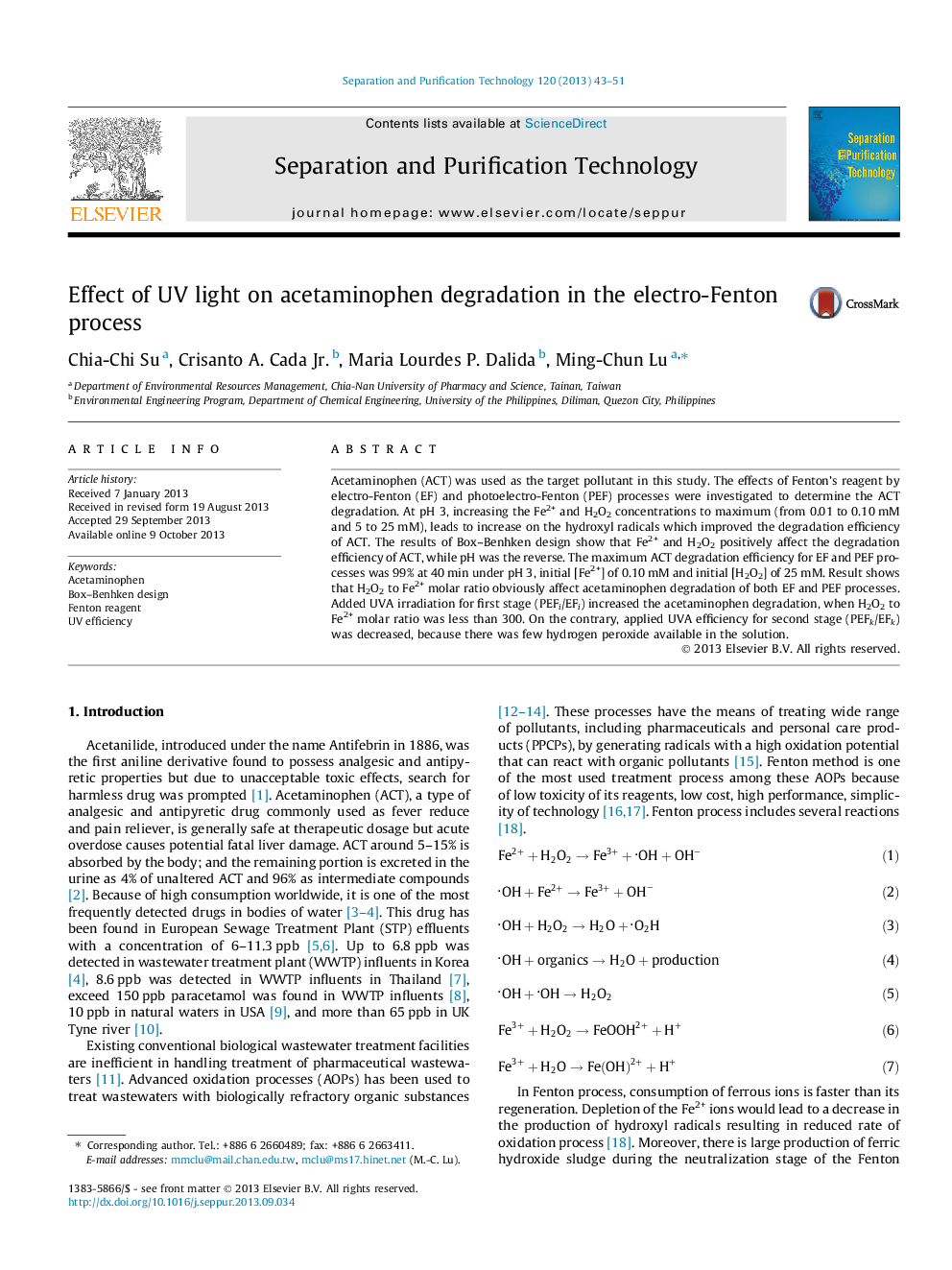| کد مقاله | کد نشریه | سال انتشار | مقاله انگلیسی | نسخه تمام متن |
|---|---|---|---|---|
| 641248 | 1456999 | 2013 | 9 صفحه PDF | دانلود رایگان |

• The effect of UV light on acetaminophen degradation was investigated.
• Pseudo-first order degradation rate constant of acetaminophen was obtained.
• Applying UV light for first stage increased the acetaminophen degradation.
Acetaminophen (ACT) was used as the target pollutant in this study. The effects of Fenton’s reagent by electro-Fenton (EF) and photoelectro-Fenton (PEF) processes were investigated to determine the ACT degradation. At pH 3, increasing the Fe2+ and H2O2 concentrations to maximum (from 0.01 to 0.10 mM and 5 to 25 mM), leads to increase on the hydroxyl radicals which improved the degradation efficiency of ACT. The results of Box–Benhken design show that Fe2+ and H2O2 positively affect the degradation efficiency of ACT, while pH was the reverse. The maximum ACT degradation efficiency for EF and PEF processes was 99% at 40 min under pH 3, initial [Fe2+] of 0.10 mM and initial [H2O2] of 25 mM. Result shows that H2O2 to Fe2+ molar ratio obviously affect acetaminophen degradation of both EF and PEF processes. Added UVA irradiation for first stage (PEFi/EFi) increased the acetaminophen degradation, when H2O2 to Fe2+ molar ratio was less than 300. On the contrary, applied UVA efficiency for second stage (PEFk/EFk) was decreased, because there was few hydrogen peroxide available in the solution.
Journal: Separation and Purification Technology - Volume 120, 13 December 2013, Pages 43–51